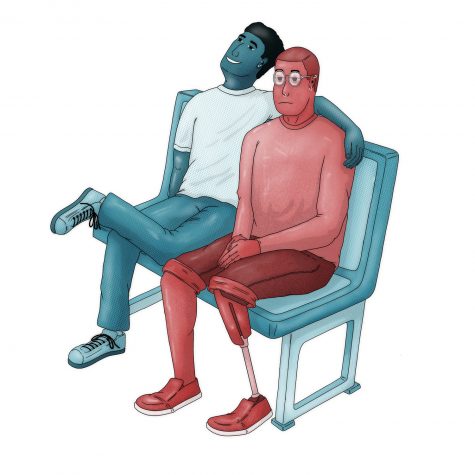Editorial: How do you navigate the gray area of consent?
February 8, 2020

In crafting the Chronicle’s Sex Issue, it was pivotal to have a conversation on an issue that cannot be separated from the subject of sex. Thus, every Chronicle staffer was asked to anonymously respond to questions regarding one all-important topic: consent.
More than half of our staff members responded to a series of questions that ranged from “What do you consider consent?” to “How can one vocalize non-consent?”
The results showed none of the respondents had an egregious misunderstanding of consent when it comes to intercourse. However, when it was pointed out that consent may be needed in situations that occur outside the bedroom, participants stopped to consider where in our daily lives consent plays a role.
Suddenly, the conversation moved from the black and white—“yes” and “no”—to navigating the gray area.
“People smoke on the sidewalk, and passersby breathe the smoke in,” said one staffer. “They didn’t ask to smoke today, but someone blew the smoke out as they passed by.”
So, where do we draw the line between our public and our personal consent? By walking out the door and into the world, are you consenting to someone possibly blowing smoke in your face? And if so, when you walk through the door to someone’s house and into their bedroom, are you consenting for them to have sex with you?
The answer to the latter is a definite no, but when we are out in the world it may be more difficult to voice our discomfort or resistance when something is done to us that we cannot directly address—such events include catcalling, being touched in a friendly manner or someone publicly exposing themselves.
To prevent events like these from progressing any further, it is crucial we set boundaries with ourselves and with others. If this is in public and cannot be done person-to-person, you have the opportunity to remove yourself from the situation—switch train cars, leave the room or cross the street.
Joe Biden, former vice president and 2020 Democratic presidential candidate, for instance, was brought into this exact conversation for putting his hands on visibly uncomfortable women.
It’s easy for us as members of the public to spot these kinds of indiscretions. In fact, when asked, “How often do you experience or witness nonconsensual events?” 88.2% of Chronicle staffers answered “occasionally,” whether it was around campus, on public transportation or in their own homes.
Body language and physical cues are not enough to equate consent, but they can be used to tell if someone is uncomfortable. As the saying goes, “Read the room.” If you are with someone who cannot read the cues, you can advocate for yourself by simply saying “No” in the moment, and then explaining specifically why it makes you uncomfortable or feel unsafe. Additionally, part of reading the room is taking action when you see others’ consent being broken, whether that be a seemingly innocent hug or shoulder rub from a co-worker. After all, silence does not equal consent.
Communication is at the core of consent, though. Vocalizing your trepidations, as well as your agreements, is the only surefire way to ensure all parties involved are on the same page.
If you find yourself troubled by how to voice consent, or how to break away from someone who does not value your consent, talk to friends, trusted family members or seek out experts—such as Title IX officers—who can support you on your mission to get the feeling of safety you deserve.






